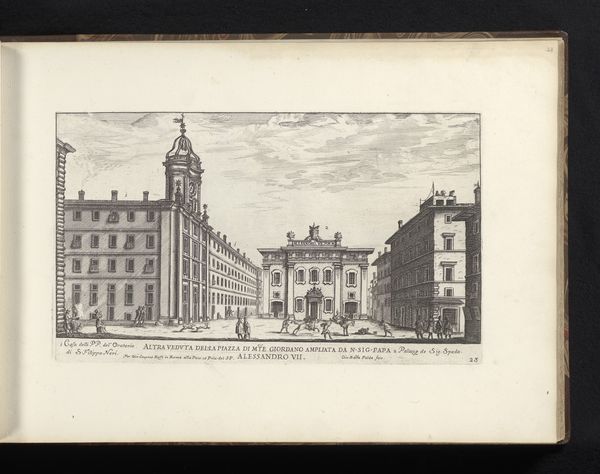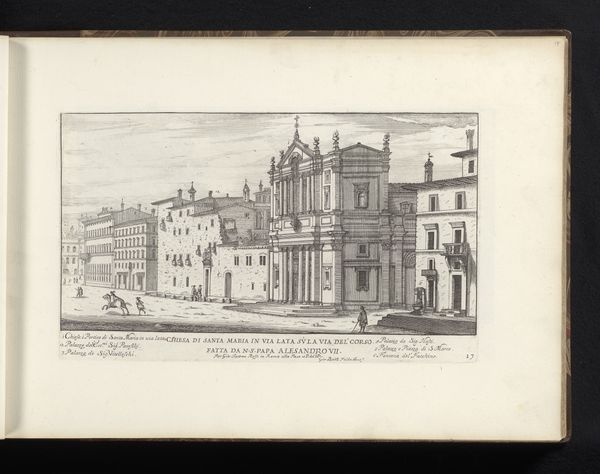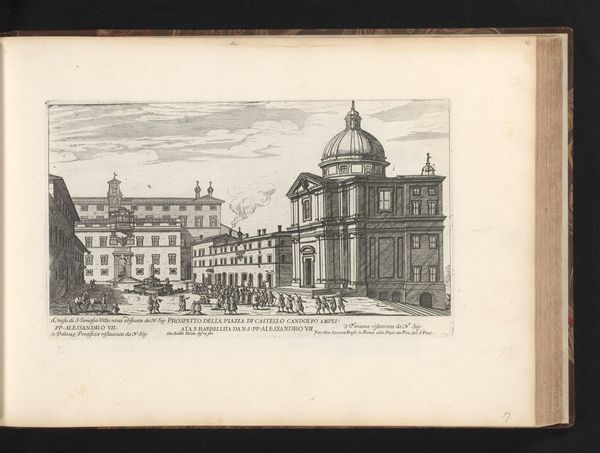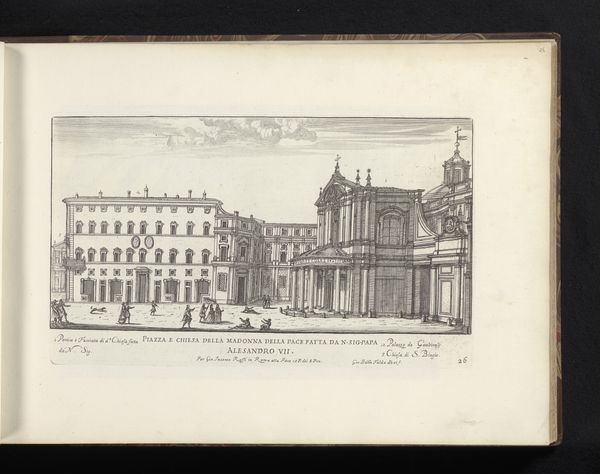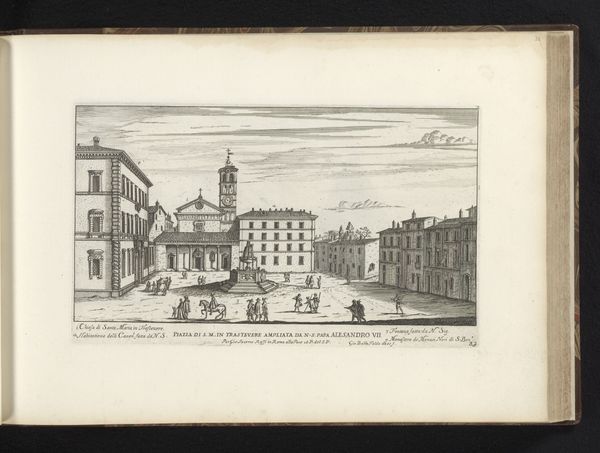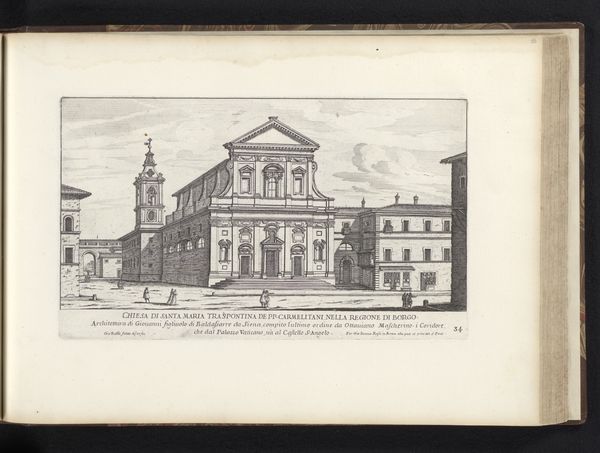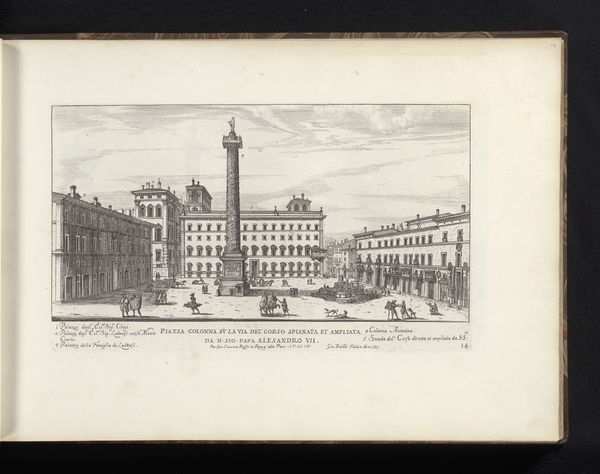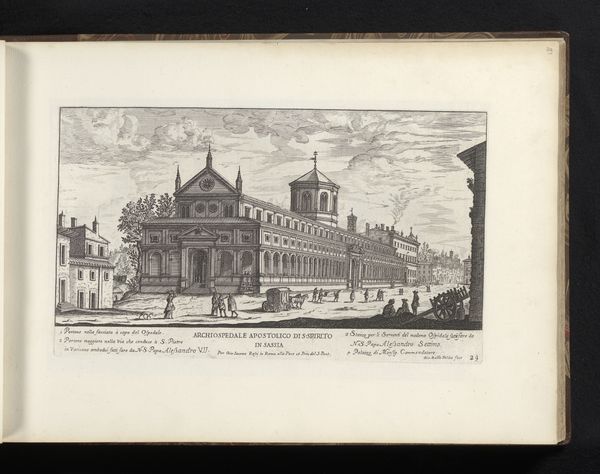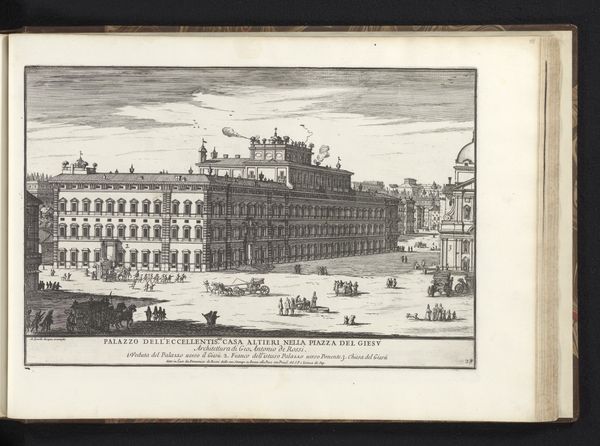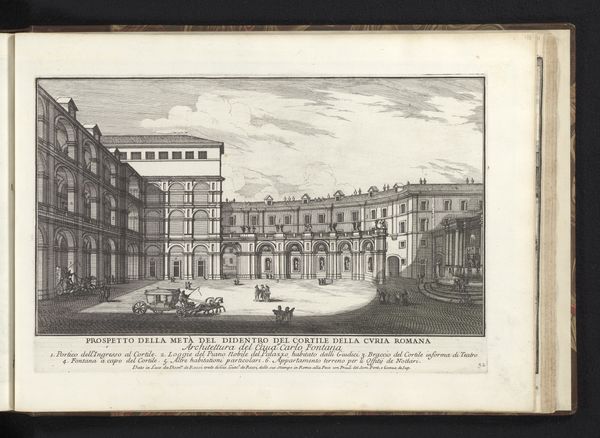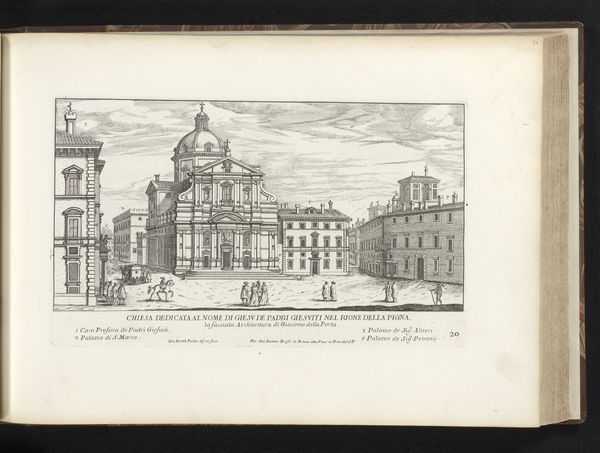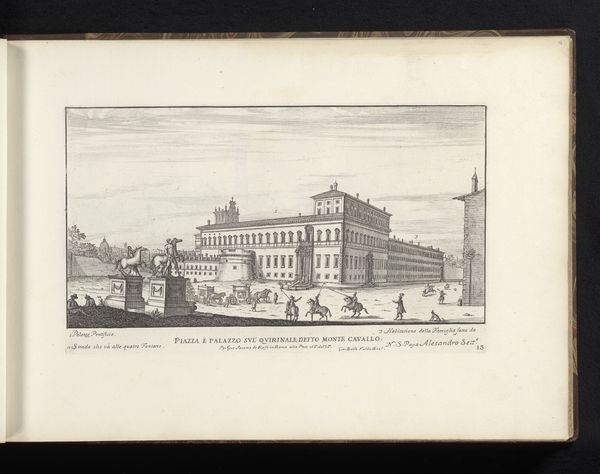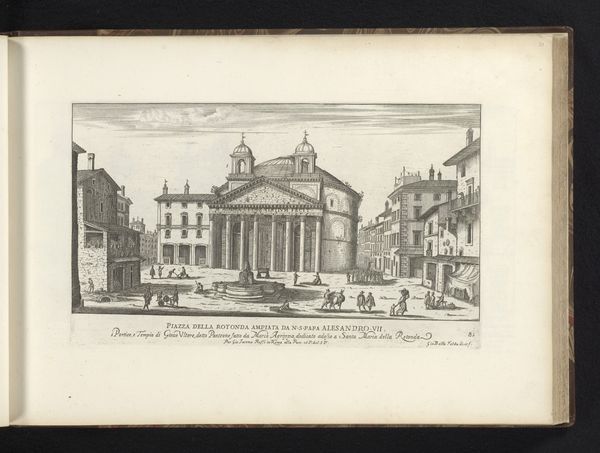
drawing, print, ink, engraving
#
drawing
#
aged paper
#
baroque
#
mechanical pen drawing
# print
#
old engraving style
#
sketch book
#
landscape
#
perspective
#
personal sketchbook
#
ink
#
pen-ink sketch
#
square
#
pen and pencil
#
pen work
#
sketchbook drawing
#
cityscape
#
sketchbook art
#
engraving
Dimensions: height 175 mm, width 293 mm
Copyright: Rijks Museum: Open Domain
Editor: Here we have Giovanni Battista Falda’s "Piazza di Monte Giordano te Rome," an engraving from 1665. It's such a precise and almost sterile depiction of the square. What social dynamics might have been at play here, or what does it communicate beyond a simple architectural record? Curator: Precisely! Falda’s work offers more than just a visual record; it's a curated view of power and space in Baroque Rome. Consider who commissioned and consumed these prints. Were they tools of propaganda, celebrating papal authority and urban development? How might Falda's perspective be influenced by these power structures? Editor: I see what you mean. The plaza does feel staged, almost like a theatre set for papal power. The eye is immediately drawn to the building with the clock tower. Is there something intentional about that? Curator: Absolutely. The tower might be a symbolic assertion of temporal, as well as spiritual, authority. The even distribution of light and the carefully constructed perspective reinforces this ordered view of papal Rome. It’s essential to remember that space is never neutral; it is always a product of social relations and power dynamics. Editor: So, while seemingly just a cityscape, it speaks to the larger issues of power, representation, and social control inherent within Rome during that era. It really underscores the intersection of art and politics. Curator: Exactly. Understanding that artwork and its moment can allow a window into societal power structures. Thanks for lending your insight! Editor: It was helpful for me as well. Thank you!
Comments
No comments
Be the first to comment and join the conversation on the ultimate creative platform.
